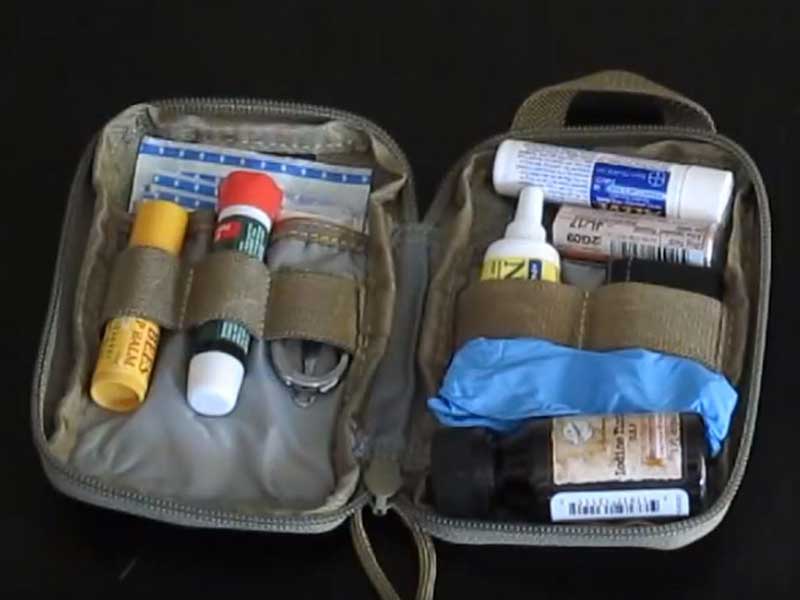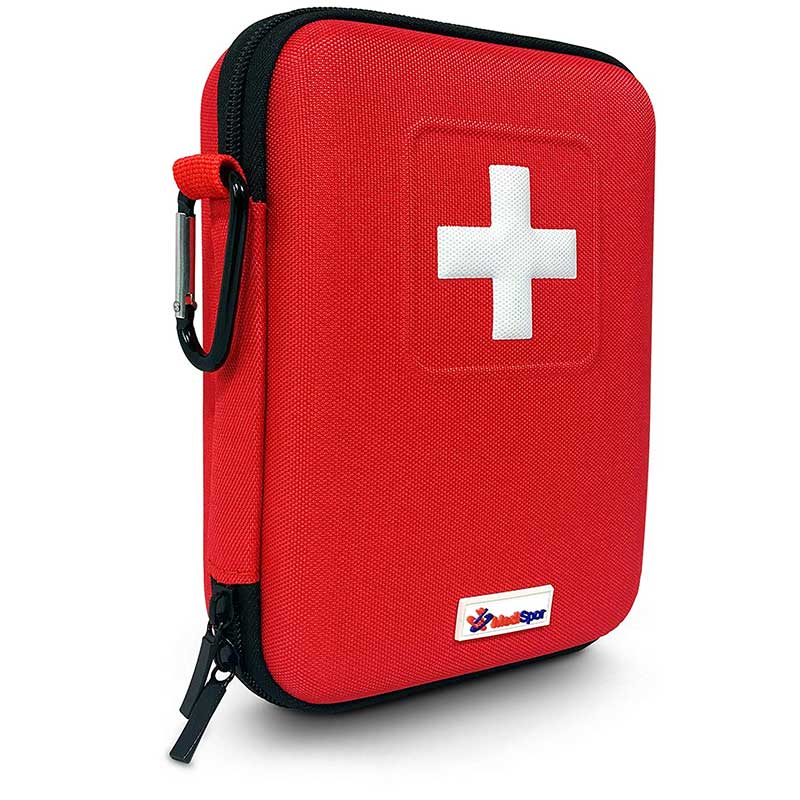Mountain first aid kit: what to take with you

The mountain first aid kit is an indispensable addition to the equipment of any hiking trip or outdoor activity. Its function is quite simple and important: if something unexpected happens, the first aid kit will allow the injured person to be treated and continue the hike; if this is impossible because of an injury that requires medical attention, then the first aid kit will help the injured person to wait to be rescued.
Medicines and first aid materials should be stored in an easily identifiable container. Because it is fragile and important equipment, it is necessary to store it in a transparent plastic bag or container to prevent damage. The following are available on the market ideal models to take to an outdoor activity (Click to view).

Care in preparing a mountain first-aid kit
- Take into account the time it will take you to complete the excursionDepending on this, you should calculate the amount of medicines and materials you need.
- Secondly, there is the type of excursion Remember that the more complicated the terrain, the more likely you are to scrape your arms or legs, or encounter other difficulties.
- Similarly, check at least every 6 months the items you have in your medicine cabinet to make sure they have not expired or gone bad.
- On the other hand, place the first aid kit in the rucksack. so that it is safe. To do so, DO NOT place the first aid kit at the bottom of the backpackInstead, it should be placed against your back and covered by clothing to protect it from any other items in the backpack that might damage it.
Below, we want to mention the items you need for a first aid kit suitable for a person going on a single day hike. This mountain first aid kit will not cover all situations that may occur during a hike, but it will cover those that are most likely to occur:
- Scratches or burns caused by friction
- Injuries caused by falls
- Insect bites
- Allergies caused by stinging plants
- Heat stroke or hypothermia
- Fatigue
Medicines for the mountain first aid kit
These are some of the most important medicines in a medicine cabinet. You don't necessarily have to have them all, so choose them based on your needs and your doctor's recommendations.
- AntihistamineThis will be of great help in case you suffer from any bites or allergies during the tour.
- UrbasonAnti-inflammatory properties: This medicine has anti-inflammatory properties and also helps to cure allergies caused by insect bites or other environmental factors.
- AnalgesicsYou can include some for more common aches and pains such as ibuprofen, paracetamol and aspirin for headaches.
- AntisepticsOne of the most recommended is betadine, as it not only cures allergies or irritations, but also helps to disinfect river water so that you can drink it without any problems. If you already have your own antiseptic you can also use it, but the most important thing is that you never forget it.
- Physiological saline solutionThis serum will help you to properly clean wounds before immobilising them to avoid infection or irritation. Likewise, this serum will allow you to remove dirt that gets in your eyes or objects that may cause allergic reactions in your eyes. You can also find physiological saline solution in small bottles so that you can keep it in your medicine cabinet.
- Insect repellentDepending on the terrain and the climate you are going to face, there will be insects, so it is essential that you try to carry repellent so that you don't suffer serious bites and your skin stays in good condition.
Mountain first aid kit materials
Some of the must-have items in your first aid kit are:
- Sling bandageThis bandage can be used to temporarily immobilise an injured body part. As you know, you never know when you might have an accident, so it is always a good idea to have one of these bandages in your first aid kit.
- Adhesive bandageIt will also be of great help to immobilise and protect any part of the body that has been injured or wounded. You can find it in small quantities that fit perfectly in your medicine cabinet and can help you a lot.
- Sterile glovesThese gloves are ideal for healing and preventing wounds from getting infected. Remember that when you are walking for a long time or holding on to vegetation or the ground itself, your hands are likely to get dirty, so it is best to wear one of these gloves to keep your hands clean when treating a wound.
- Anti-ScratchThese are to be used in case the shoes are rubbing a little and are causing you to suffer from a blisteror that your shoulders are suffering from rubbing against the rucksack.
- Small tweezersThese are very important because when you are out in the open air, it is very possible that thorns or elements can get into your hands or body, and with these tweezers they can be removed more easily.
- Thermal blanketThe thermal blanket is a must-have item in your mountain kit, because it can be useful whatever the weather: if it is very cold, the thermal blanket will help prevent hypothermia; if the temperatures are very high, then you can protect yourself from heat stroke.
- Sterile gauze padsThese are perfect for covering wounds and protecting them from the elements. So don't forget to include a pack of these in your first aid kit.
- Fabric tape and adhesive stitchesThese will help you to fix the gauze to your skin in case you suffer a cut or a bite.
- Scalpel blades, razor or small scissorsThese items are indispensable whether for cutting food, gauze, adhesive tape or other items.
Finally, keep in mind that you can be safer during your excursions if you wear the right clothing, wear good boots, and if you you have a good team. So make sure that each of these items is in perfect condition and will help to enhance your ride experience.
Don't miss any adventure in the Pyrenees!
